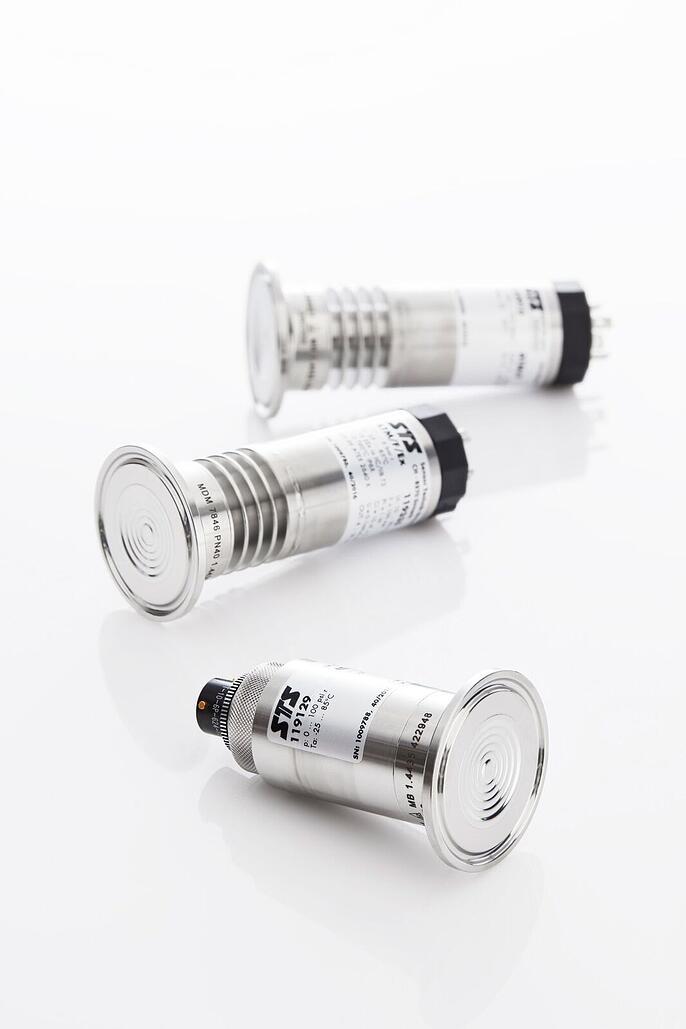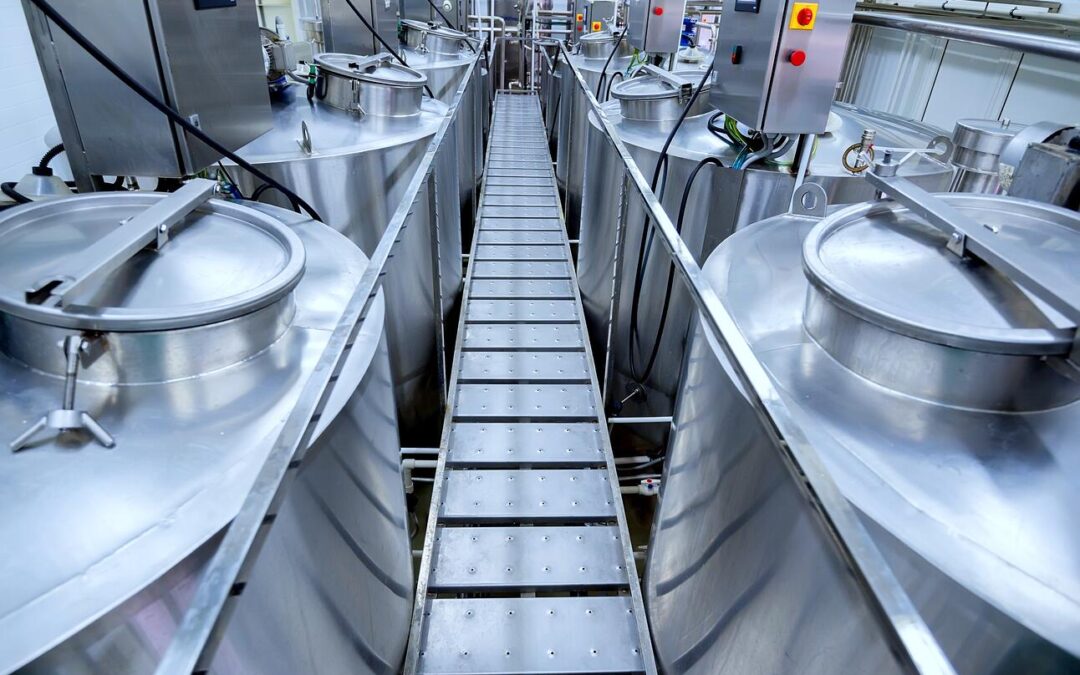The requirements on pressure transmitters are particularly high in the foodstuffs and pharmaceuticals industries, as well as in the biotechnology and related industries (the packaging and filling industry, for example). In the following, we will describe what end users in these industries must consider when choosing a suitable pressure transmitter.
The main focus in pressure measurement in the above industries is, of course, on hygiene. Contamination of the products and the propagation of germs must be prevented to protect humans and the environment. Pressure transducers used in sensitive environments must therefore comply with the regulations of the relevant authorities (Europe: EHEDG; USA: FDA). Besides the materials employed, the design of the pressure transmitters must also be observed.
Design of pressure transducers
Hygiene-friendly pressure transmitters must be easy to clean and germs must have an adequately small surface area to target. This begins with construction of the measuring instruments. Dead spaces, crevices and edges are thus to be avoided, since germs can accumulate at these points and cleaning made more difficult.
An equally important aspect is the connection. The pressure transmitters must be easy to dismantle, since frequent cleaning is to be carried out in sensitive applications, and the seals must be regularly changed. This circumstance generally rules out screw threads. But there is also a further reason independent of dismantling, being that screw threads provide impurities even more surface area to attack. For this reason, hygienic pressure transducers usually have milk flanges, clamp flanges and DIN flanges.
All components must be flush with one another and an efficient assembly and disassembly respected.
Materials of pressure transducers
The cleaning aspect is also the main focus of the materials employed. This starts with the surfaces of the selected materials. Both the membrane and other elements of the pressure sensor in contact with the medium should have the lowest possible roughness. The rougher a material, the more germs are able to adhere to it and the more difficult cleaning then becomes. A roughness of 0.8 μm is standard in hygienic applications, although not optimal for every process. To meet the highest requirements, a roughness of ≤ 0.4 μm should be considered.
Roughness, of course, is also caused by corrosion. For this reason, the housing material plays an important role in hygienic pressure transmitters. Only high quality stainless steels with a low ferrite content should be used in order to eliminate corrosion as much as possible. An example here is the material 1.4404, also known as V4A steel, which, due to its 2% molybdenum content, meets increased requirements for corrosion resistance. The EHEDG provides guidelines here for the suitability of construction materials in the individual processes concerned.
The requirement of smoothness, of course, also applies to the sealing materials, which must be chemically and thermally stable. If they are not, then they become porous over time and thus offer an ideal surface for attack. STS uses Viton for its hygienic pressure transmitters, a fluoroelastomer with high thermal and chemical resistance, which withstands hydrocarbons even at higher temperatures without swelling up or becoming porous.
The requirements for the materials employed are derived from the cleaning processes in the foodstuffs and pharmaceuticals industries, as well as from biotechnology. Pressure transmitters used in closed installations must be able to withstand Cleaning in Place (CIP) and Sterilization in Place (SIP) cleaning procedures. In these processes, installations are cleaned without any further disassembly. To make the demands on these materials clear, the CIP method itself should now be briefly described:
- In the first step, coarse contamination is removed by pre-rinsing with water.
- Next, an alkaline agent is used.
- This alkaline detergent is then rinsed away with water.
- To remove limescale and similar deposits, the installations are rinsed with an acid.
- The acid is now rinsed away with water.
- A disinfectant is then used to kill off microorganisms.
- A flushing with ultrapure water to finish off.
In the SIP process, steam is fed into the application at an average temperature of 140 degrees Celsius. The pressure transmitters must therefore be able to survive these corresponding temperatures without suffering damage.
One last aspect of material selection rests with the pressure transfer fluid. In “normal” pressure transmitters, silicone oils are often used. These, however, can contaminate the process media if the pressure transmitter is damaged. Beer, for example, would no longer froth, just to name one comparatively harmless example from the foodstuffs industry. Only those fluids listed by the authorities may be used here.

ATM/F – Hygienic Pressure Transmitter
Other aspects / special cases
While the above-mentioned aspects belong to a hygienic pressure measurement, there are two further points that may be of relevance to some users. This certainly includes explosion safety with ATEX certification. In addition, the possibility of readjustment, which most pressure transmitters no longer have, can also be an important cost factor. In particularly critical processes in the biotechnology or pharmaceuticals industry, the measuring instruments used must be validated every three months. If these can be freshly adjusted in a calibration laboratory, where appropriate, then this is an advantage not to be ignored.
A further special case might be the combination of both pressure and temperature measurement. For example, an STS customer needed temperature monitoring on a packaging machine for sterile injection needles in addition to the pressure measurement. When both applications can be combined within one hygienic instrument, then this minimizes both the space requirement and the cleaning effort.
This special case, however, also serves as an example for pressure measurement in sensitive environments, since users must conform to strict guidelines. And these can also differ from process to process (with regard to permitted materials, for example). Thanks to the modular design principle of STS, hygienic pressure transmitters can also be adapted to individual requirements within the very shortest of time.
